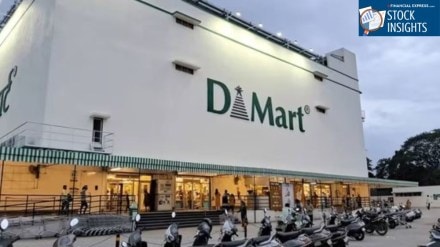The September 2025 quarter results of Avenue Supermarkets, which operates the Dmart retail chain, were keenly awaited by investors on Dalal Street. This was primarily for two reasons. One, to get a glimpse into whether Dmart is able to weather th onslaught of quick commerce and keep growing. Two, to get a sense of health fo the Indian consumer. After all, the government had introduced the new GST regime, which had broadly reduced the GST on most-day-to day products consumed to 5% levels with effect from September 22, and this was expected to play a role in demand revival.
Avenue Supermart’s stock ended 0.3% higher at Rs 4,319.7 on Friday, and over the past three months the stock has gained about nearly 6% compared to a broadly flat Sensex.
DMart’s Q2: A story of sales recovery and margin pressure
Avenue Supermarket has highlighted that like-for-like growth was 6.8% in the September 2025 quarter vis-à-vis 5.5% a year earlier, for stores that have been operational for atleast 24 months at the end of reporting period. This shows that growth has accelerated in the quarter.
In contrast, in the June 2025 quarter, the company had highlighted that it’s like-for- like growth was 7.1 % vis-a-vis 9.1 % in the June 2024 quarter.
DMart’s retail business area was 17.9 million sq feet at the end of the September 2025 quarter vis-à-vis 15.8 million sq ft a year earlier. The retailer highlighted that it added 8 stores in the second quarter of FY26, and its store network reached 432 on a pan India basis at the end of the quarter under review.
As a result, its consolidated revenue from operations increased nearly 15.5 % y-o-y to Rs 16,676.3 crore in the September 2025 quarter. However, its operating profit margin fell 30 basis points y-o-y to 7.3 % in the September 2025 quarter, given a higher cost structure. The company’s consolidated net profit grew 3.8% y-o-y to Rs 684 crore in the September 2025 quarter.
Its consolidated revenue from operations grew 16.3 % y-o-y to Rs 16,359.7 crore in the June 2025 quarter.
Peer comparison: Trent continues its aggressive expansion
Meanwhile, Trent, which operates Westside and Zudio among other brands, in its business update for the September 2025 quarter has highlighted that its standalone revenue from sale of products (including GST) grew 17% on a y-o-y basis to Rs 5,002 crore. Trent had grown its standalone revenue from operations by 19.8% y-o-y to Rs 4,781 crore in the June 2025 quarter.
It opened a net 13 Westside stores and 40 Zudio outlets in the September 2025 quarter.
Trent had 1,043 stores at the end of June 2025 quarter with an area of nearly 13.6 million sq ft vis-a-vis 890 stores a year earlier with an area of 11 million sq ft.
The valuation dilemma: Is growth already priced in?
Avenue Supermarket trades at a P/E of more than 80 times estimated consolidated FY26 earnings while Trent trades at more than 90 times estimated consolidated FY26 earnings. These valuations are no doubt eye-popping. But the fact remains that such valuations have broadly sustained for many years.
Trent at Rs 4,689.5 on Friday, has corrected sharply from its 52-week high of Rs 8,345.9 that was reached on 14 October 2024. This was largely on account of fears that the tearing growth is a thing of the past.
Avenue Supermarket has also corrected from its 52-week high of Rs 4,916.3 that was reached on 4 September 2025.
Clearly, given the broadly moderating growth rates, retail stocks appear expensive. More recently, retail stocks have broadly factored in the revival in consumer spending over the next few quarters.
Amriteshwar Mathur is a financial journalist with over 20 years of experience.
The writer and his family have no shareholding in any of the stocks mentioned in the article.
Disclaimer: The website managers, its employee(s), and contributors/writers/authors of articles have or may have an outstanding buy or sell position or holding in the securities, options on securities or other related investments of issuers and/or companies discussed therein. The content of the articles and the interpretation of data are solely the personal views of the contributors/ writers/authors. Investors must make their own investment decisions based on their specific objectives, resources and only after consulting such independent advisors as may be necessary.
